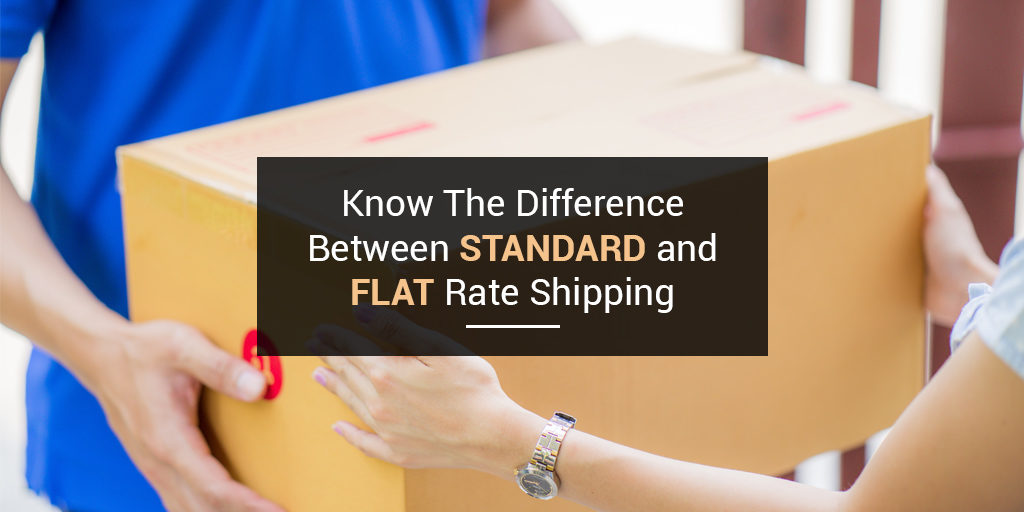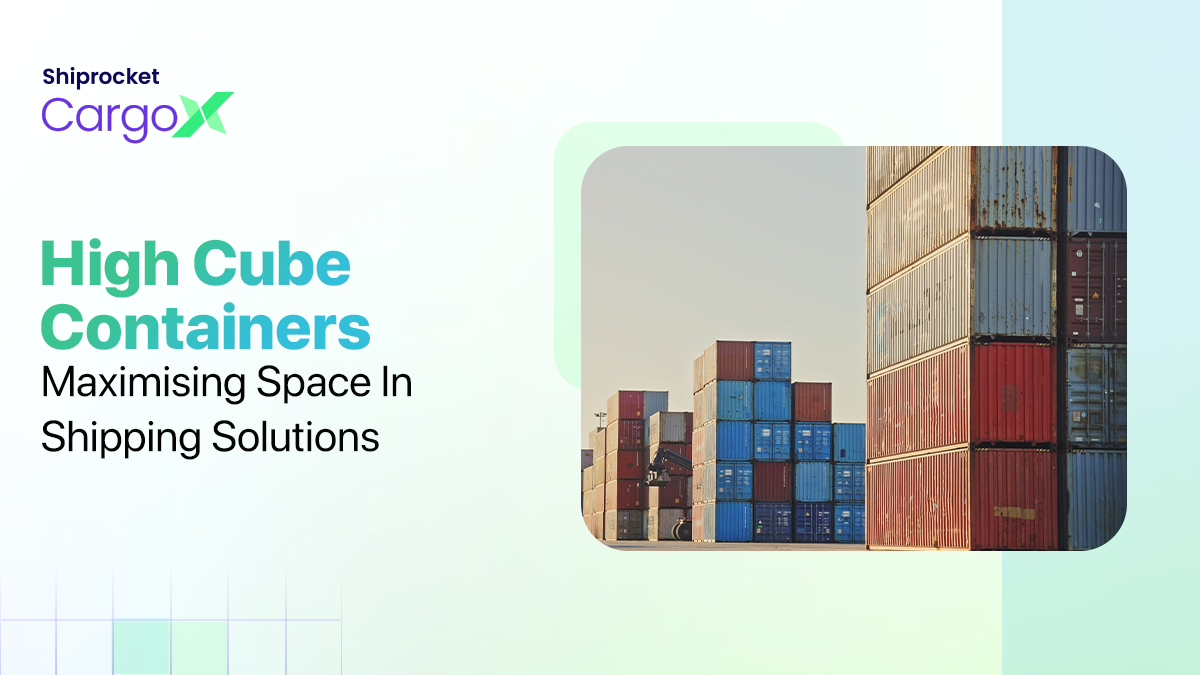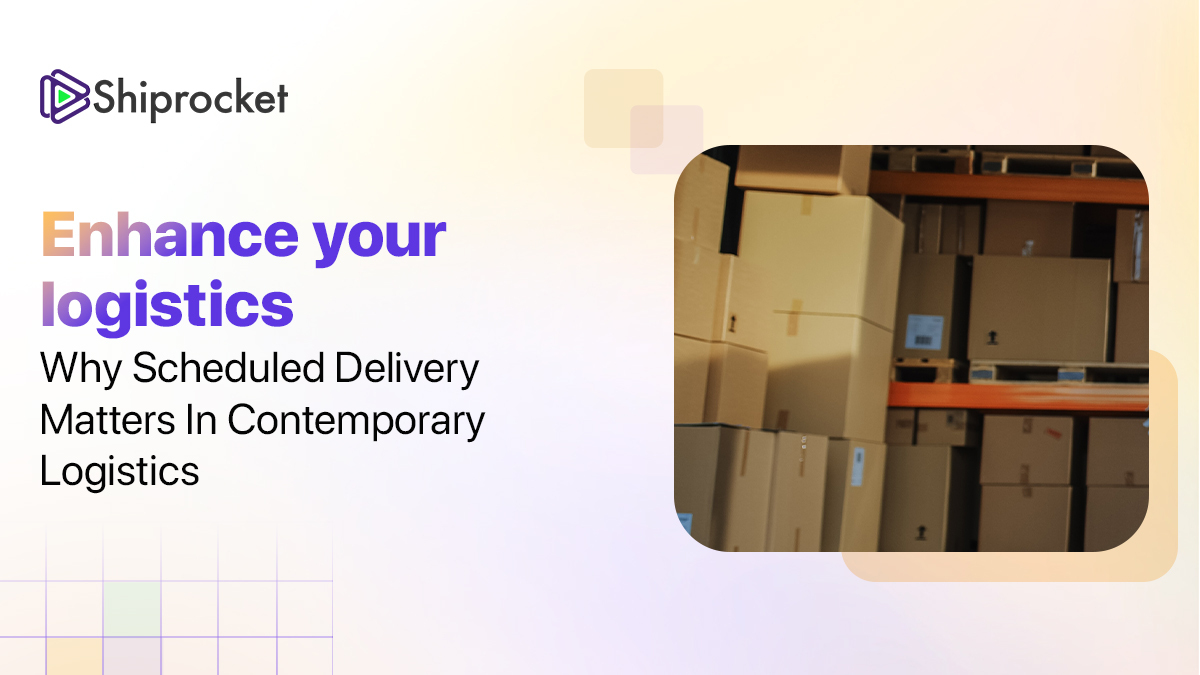What Is The Difference Between Standard & Flat Rate Shipping?
In eCommerce logistics, the type of shipping and related costs play an essential role in the overall delivery process. In this context, both sellers and customers need to have a fair idea about shipping, their features, and other factors that need to be analyzed. There are two major types – standard shipping and flat rate shipping when we talk about shipping methods. What exactly are the differences between the two, and how will you distinguish between them? Read on to gather a more precise idea.

What Do You Mean By Flat Rate & Standard Rate Shipping?
Flat Rate Shipping: It denotes a regular shipping rate applicable for all types of shipping boxes and packages, irrespective of weight, size, and other dimensions.
Standard Rate Shipping: It denotes that the rate of shipping differs according to the weight, size, and other related dimensions of the box or the package.
How Can You Differentiate Between Flat Rate & Standard Rate Shipping?
Essentially, both flat rate and standard shipping are pricing strategies for shipping your orders. You can provide a flat shipping rate to your buyers for every zone or a particular weight slab or give them a standard shipping rate that can vary within a zone, too, and is decided according to different factors.
In the case of a flat rate, it merely means that you can ship any item at the same price, usually within zones. In most cases, this price is calculated and set by the eCommerce site itself following its shipping partner. The flat rate shipping method is based according to different shipping zones. For example, the flat rates may differ according to the location and the zone where the item needs to be shipped.
For within-city shipments, all customers will pay a single shipping price, no matter their number. As a result, this form of shipping is ideal if you need to deliver to an address that falls within a particular zone closer to your business. Or if you have regular customers that come from specific zones. In flat rate shipping, there is a predetermined delivery time that cannot be altered.
Standard shipping is priced based on the regular shipping charges that are calculated based on pin codes and zones. You do not need to follow any specific flat-pricing strategy to ensure that the customers get only one shipping price. The delivery time can vary depending on the packages and can be anywhere from 5-15 days. As compared to flat rate shipping, we use standard shipping for longer or un-prioritized deliveries.
Advantages Of Flat Rate & Standard Shipping
Flat Rate Shipping
Transparency
When you opt for flat rate shipping, you give your customers a fixed rate, which brings about clarity in your selling mechanism. Thus, you earn the trust of the customer, and they relate better to your business. They also prefer your business over your competitors as they do not have to pay additional shipping or handling fees.
Avoid Excess Shipping Costs
With this process, your customer has to pay absolutely no surcharge. Thus, he does not worry about the shipping and focuses more on purchasing the product. If you pick shipping companies like Shiprocket, you can streamline your shipping costs by opting for flat rate shipping across zones. Shiprocket’s shipping rates start at just ₹20/500 grams.
Simplified Management
Once you opt for flat rate shipping, your eCommerce site won’t need a shipping calculator anymore. You won’t need to alter the shipping cost of each product based on weight and dimensions. This gives you more flexibility to focus on optimizing your product and other fulfillment operations like packaging, sourcing, etc.
Lesser Weighing Errors
This is the best outcome of flat rate shipping as standard errors due to weight and dimension measurement are most. With a flat rate, you don’t need to measure; thus, you save on time and effort alike. For example, if you ship products within 500g, you do not need to measure your shipments; you can ship them directly. This helps you avoid weight disputes arising due to the volumetric weight and dimensions of the package.
Standard Shipping
Traditional Approach
If you do not have many customers across a particular zone, you can ship at a standard cost. This saves you from constant to and fro between shipping partners and your business as your customer pays for the entire shipment.
Less Liability
As a new seller, you do not know the reach of your business. Therefore, it is ideal for you to ship at standard costs to avoid any confusion and loss. You save time and money.
Choosing The Ideal Shipping Process For Your eCommerce Business
As a seller in the eCommerce business, it is essential to understand which shipping process suits you the best. You need to have an idea of the expenditure and choose the cost-effective method. In most cases, flat shipping is ideal for regular shipping deliveries within closer distances (for example, within the country). For distant shipping zones, it is better to opt for standard shipping as they are premier. You can reimburse a part of the shipping charges from the customer in the form of delivery charges.
It is also vital to analyze the number of shipments you do before deciding to opt into flat rate shipping. Sometimes, you might have to pay for additional shipping costs when you choose flat rate shipping. This means that flat rate shipping is ideal if you have many customers.
Conclusion
Both flat rate and standard rate are beneficial in their ways. This means that you need to make a call depending on your business and its requirements. Ensure that you decide carefully based on your business needs and factors like reach, buyers, etc. Don’t choose to price in haste because it may lead to a business loss and cut through your profit margins.






